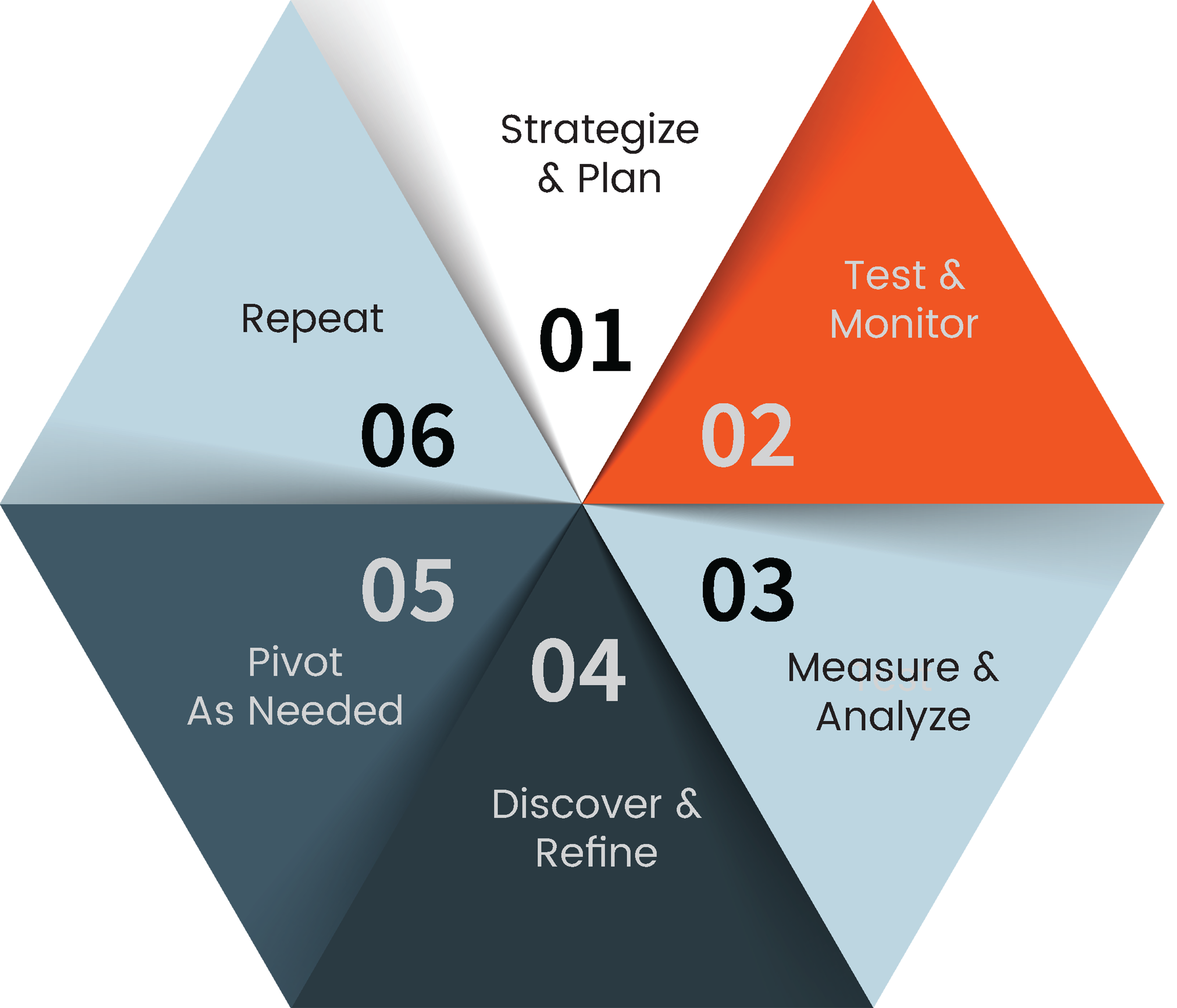Optimizing Content to Boost SEO and Conversions

The bounce rate defines the percentage of people who land on your page but leave without taking any action. This describes the percentage of visitors who leave your page compared to the total number of visitors on that page. In Google Analytics, you can visit the "new user" section, where you can take a closer look at "Behavior," where you can see which content these users engage with the most.
Social
When you can tailor content to visitor’ needs, at their time of need, your conversion rates will skyrocket. Google Keyword Planner is a reliable alternative option for anyone looking for a free tool. It also offers valuable data and analysis to help businesses make informed decisions about their keyword strategies and improve their SEO tactics. After establishing your baseline, save your list and align them with your SEO goal. For instance, let's say your online shop is promoting Halloween costumes.
How To Increase Conversions With This 6-Step Customer Journey Analysis
The easiest way to calculate this value is to divide the total number of visits by the total revenue generated by those visits. For additional accuracy, consider doing this by channel (organic vs. paid vs. email, etc.). Download this guide to the concepts and tools to help you track your SEO success. Once you’ve defined the events that matter most, it’s time to configure them in Google Analytics.
Enhancing Customer Service with Professional Phone Answering Solutions
By incorporating SEO conversion tracking techniques, businesses can make informed decisions and target their SEO efforts towards influential actions and objectives. https://dvmagic.online HubSpot Service Hub is not just a platform; it's a transformative tool that empowers businesses to provide exceptional customer service. People in search engine optimization often try to target many different keywords with a single web page. As algorithms have evolved, the approach of trying to rank for a bunch of keywords (especially competitive buying intent keywords) with a single page rarely works. Learn essential best practices to optimize your website for higher conversions. Discover actionable strategies to improve user experience, increase engagement, and boost sales. The next step is to tailor your content to address their pain points. At this stage, you need to ensure that the user journeys on your landing pages are optimized to facilitate conversions. Did you know that content can elevate your conversion rates manifold? Conducting A/B tests can help you see how your forms improve or decline based on small changes. It will help guide you towards creating a more efficient and effective form. Additionally, you can also use a tool like MarketingCloudFX to see your audience’s experience firsthand. This tool features VisitorRecorderFX, which helps you see how your audience browses your site. It allows you to understand their experience better, so you can refine the conversion path and make it easier for users to convert.
- You can even consider creating dedicated landing pages for each of these keywords to provide in-depth information aligning with search intent.
- This guide is meant to be an all-in-one resource for CRO, but just as you can “always do better” with a conversion rate, you can always learn more about the process.
- Understanding your conversion rate makes it easier to attach a value to your website traffic.
- While this approach is natural to a business, it’s also the wrong way to communicate with prospects, especially when dealing with organic visitors who don’t know your brand.
By analyzing key performance metrics and making informed adjustments to marketing campaigns, businesses can optimize user experience and encourage visitor conversions. Differentiating between new and returning visitor conversion rates can unearth valuable insights into user interaction patterns with a website. Monitoring these rates assists in developing targeted strategies aimed at enhancing user experience and nurturing visitors towards conversion milestones. In conclusion, Google Analytics plays a vital role in tracking conversion in SEO, providing businesses with valuable insights to refine their strategies and optimize performance. By understanding the various data types and applying them to decision-making, businesses can harness the power of analytics to achieve their unique objectives and goals. SEO focuses on increasing visibility in search engine results to drive organic traffic, while CRO aims to convert that traffic into customers. At a granular level, every touchpoint a prospect has with your brand’s content is another step on that journey – another piece that convinces a shopper to become a buyer. Now that you’re familiar with the importance of SEO optimization, it’s time to get some practice. According to Scandiweb agency responsible for SEO improvements and conversion optimization tweaks, such superb outcomes were possible due to the following practices. They have organized it clearly with folders and myriads of subfolders with consistent URL mapping, so this labyrinth is paradoxically easy to navigate and crawl by search engines. Wise.com, formerly known as TransferWise, is a financial technology company that offers online money transfer services, providing a cost-effective and transparent way to send money internationally. We explore this interplay through five distinct examples, illustrating how CRO can be skillfully woven into SEO campaigns. If your content doesn’t match the search intent perfectly, even if it gets traffic, those users will not convert. Studies have shown that businesses using data-driven strategies experience five to eight times higher ROI. Conversion rate optimization (CRO) is a process that largely depends on data. The core focus for most CRO strategies is to use consumer data to make their customer journey smoother and experience better. To optimize your content for SEO, you need to research relevant keywords and incorporate them naturally throughout your content.

And the great thing about social media is that you get to engage with them one on one if they allow it. Knowing the keywords they used to visit your site is useful, but not technically practical (or feasible in a live setting). Now that we know the basics, let’s understand why people are coming to your website.
